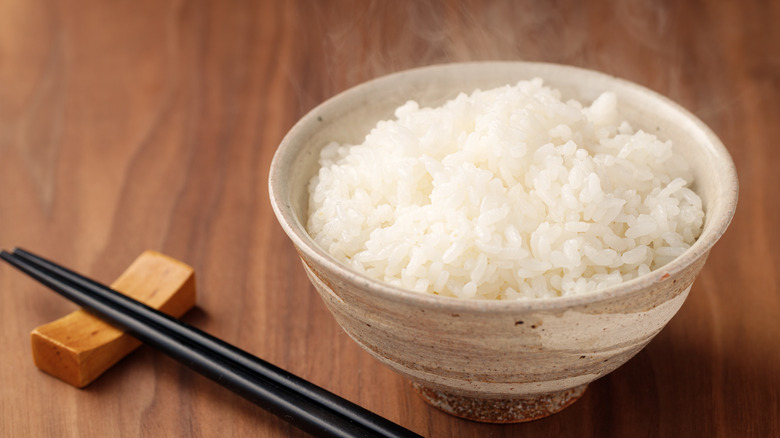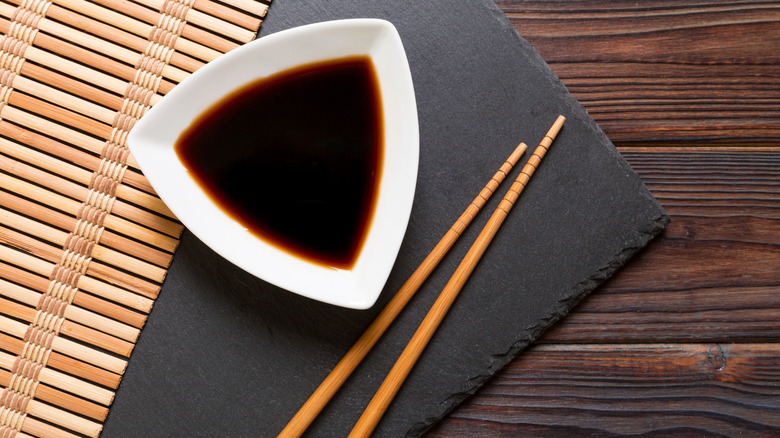The Seasonings You Should Never Add To Rice In Japan
What do sushi, onigiri, and Japanese breakfast all have in common? One word: rice. It's an absolute must when it comes to Japanese cuisine, and many of the reasons go beyond flavor or satiety. According to Stanford, the Japanese word for cooked rice, gohan, can be found in the Japanese terms for breakfast, lunch, and dinner. This means that rice is not some separate side dish but is ingrained (pun intended) throughout all meals.
Rice is sacred in Japan, and it's associated with words like blessing, joy, creation, and providence, per Just One Cookbook. In Japanese culture, it is believed that each grain contains 88 gods, which is why bowls of rice should be left completely empty, as it's considered offensive to leave even one grain behind. The holy grains are even used to make mochi, sake, and sekihan (rice with adzuki beans), which respectively can be seen at events like New Year's festivities, Shinto weddings, and birthday parties (via Savor Japan).
This being said, it should be no surprise that eating rice in Japan has its own rules. For instance, according to Japan-Guide, you should never stick chopsticks into a bowl of rice in a vertical fashion, as this practice is for funerals. And when eating rice, you should hold the bowl with one hand and eat with the other hand rather than leaving the rice to sit on the table. Finally, it's best to avoid seasoning your rice with certain ingredients. Here's what they are.
Soy sauce is a no-go
To clarify, you can season rice in Japan, that is, if you're using one of the following ingredients: furikake seasoning, ajitsuke nori, or tsukudani, as mentioned on The Spruce Eats. (Furikake seasoning is a mix of sesame seeds, nori seaweed, dried fish, and usually, other things, like miso powder or dried yuzu peel, per MasterClass. Ajitsuke nori consists of sheets of roasted seaweed flavored with tare sauce via Japanese-Products. And finally, tsukudani translates to "preserved food boiled in soy sauce," which may be meat, vegetables, or nuts, as Food in Japan explains. Zojirushi adds that umeboshi (sour plums), eggs, and tsukemono (pickled foods) are also fair game.
So which ingredients are not okay over rice? According to The Spruce Eats, the list includes soy sauce, mayo, chili peppers, and chili oil. But why? Apparently, combining rice with okazu or non-rice items is known as "bouncing," and it's considered impolite and may make you look bad in front of others at a nice restaurant, per Japan Today. The outlet even found several folks that said this "bouncing" is somehow tainting in the rice, calling it "sloppy," "unforgivable," and "dirty." This seems to ring the truest for sauces, which is likely why soy sauce, mayonnaise, and chili oil made The Spruce Eats' list of don'ts, while additions like umeboshi and nori seaweed seem to be more acceptable since they are non-sauce items.

